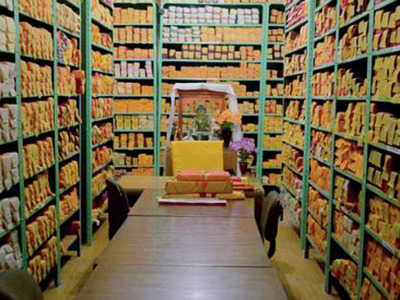Highlights
Concerned over the safety of nearly 80,000 ancient Buddhist manuscripts and artefacts, the Library of Tibetan Works and Archives (LTWA), one of the most important libraries and institutions of Tibetan works in the world, will set up its first preservation centre near Bengaluru. The main LTWA is in Dharamsala, Himachal Pradesh.
The Centre for Tibetan Studies will be located at the 3.8-acre Dalai Lama Institute for Higher Education near Ramanagara on the Bengaluru-Mysuru highway.
“We’re worried about the safety and security of the invaluable manuscripts housed in LTWA, Dharamsala. The present location, where these ancient and priceless Buddhist manuscripts are kept, falls within the notorious sub-Himalayan zone 5 which is considered the highest risk belt for earthquake in the seismic hazard zoning map of India. In the long run, it may be dangerous to keep so many priceless manuscripts in one place,” LTWA director Geshe Lhakdor told TOI.
Further, he said, the climatic conditions at Dharamsala have proven extremely detrimental to the collection. “Due to high levels of humidity, Dharamsala receives very heavy rainfall which stretches for several months. We need a better environment to store and preserve these manuscripts. What better place than Bengaluru which has technological advantages too to preserve these ancient manuscripts ” he said.
Lhakdor said the drawing for the proposed centre near Bengaluru is ready. “The project requires huge funding. We are looking at philanthropists, who can give us funds for preserving these ancient manuscripts. These are priceless collections and we cannot afford to lose them at any cost,” he added.
Priceless collection
Founded by the 14th Dalai Lama on June 11, 1970, the LTWA houses ancient manuscripts and artefacts relocated from Tibet in 1959. The manuscripts relate to Tibet’s history, politics, culture and art. The library has more than 80,000 manuscripts, books and documents, over 600 Thankhas, statues and other artefacts of Buddhist heritage, apart from thousands of photographs. “The main aim of the library is to preserve, promote and foster the culture and identity of Tibet. We want to share the collective knowledge and wisdom with the world,” Lakhdor said.
source: http://www.timesofindia.indiatimes.com / The Times of India / News> City News> Bangalore News / by Seetha Lakshmi, TNN / October 20th, 2017
